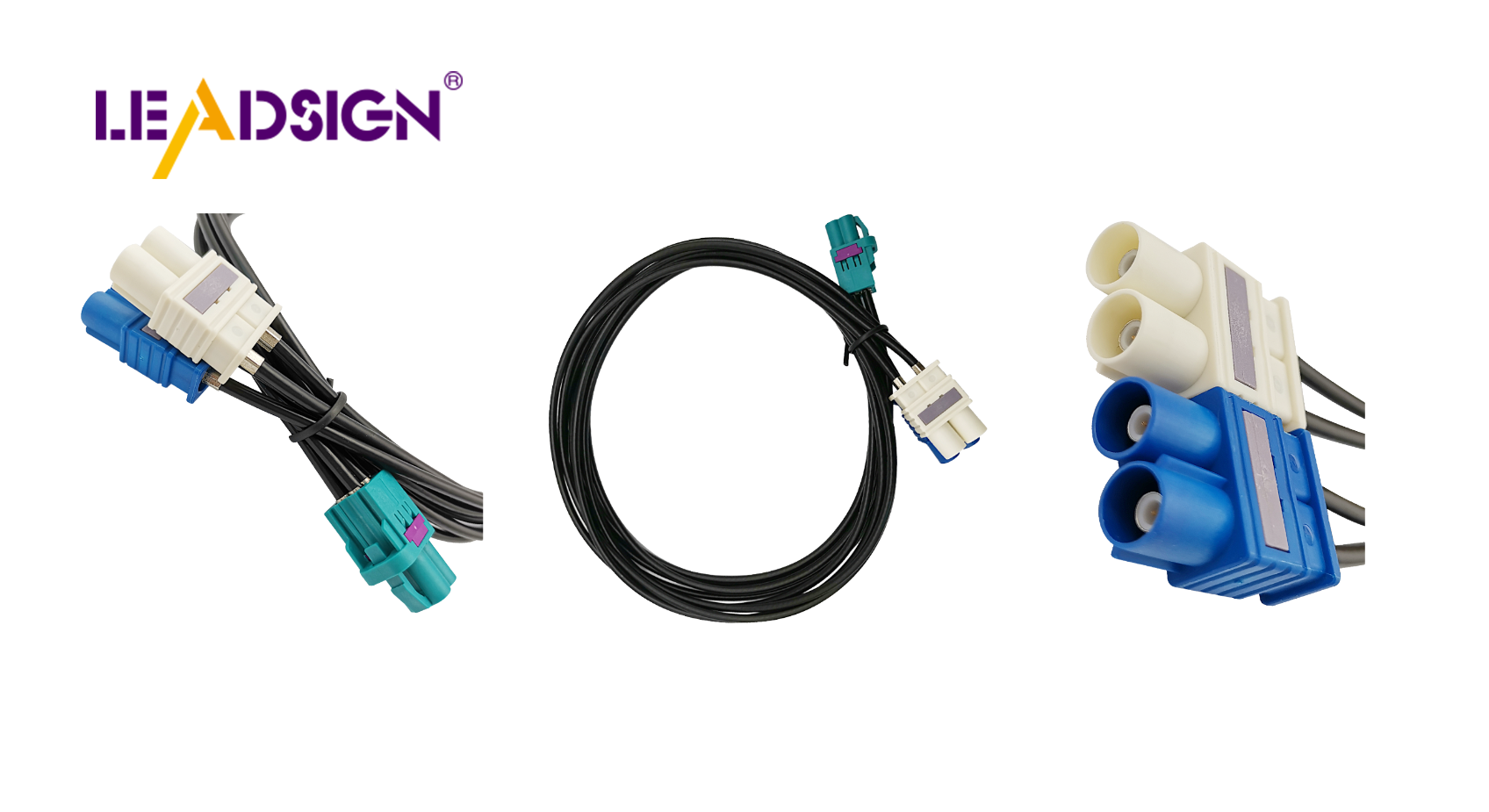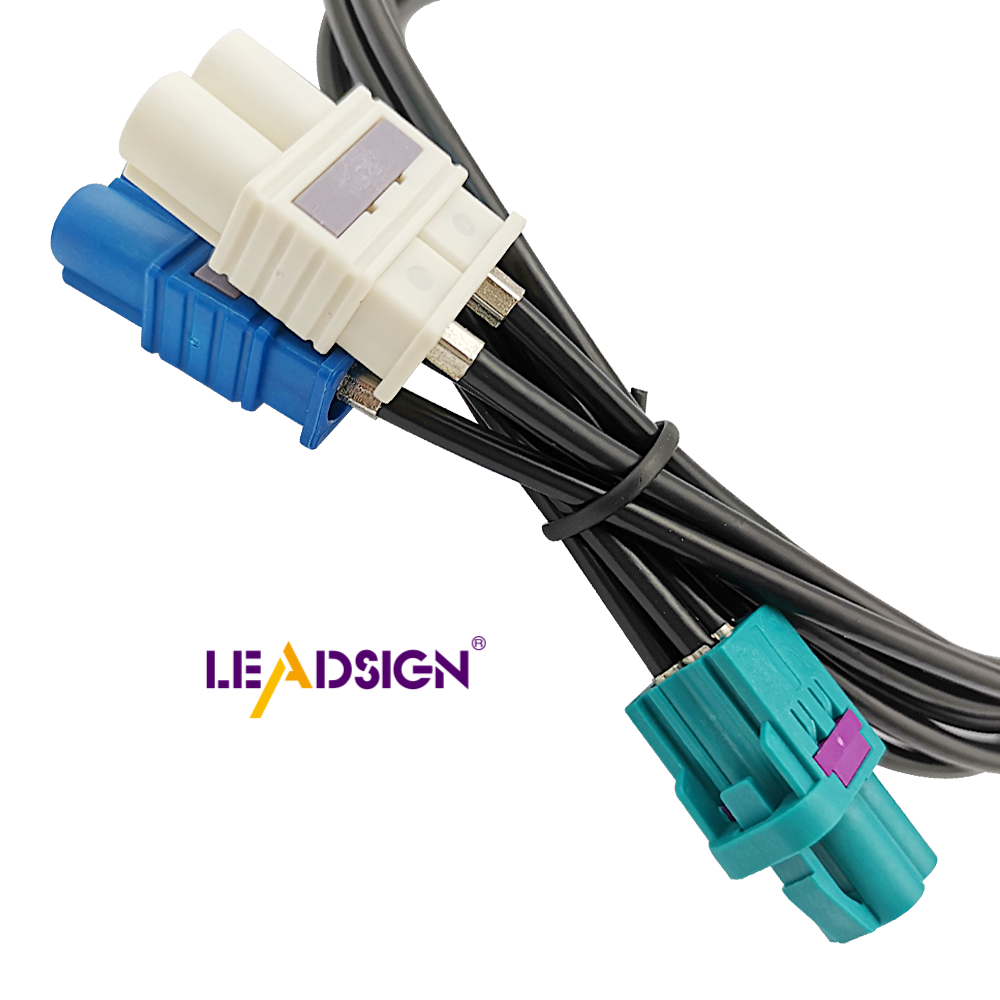Exploring Auto Wire Connector Types and Compliance Standards

Car wire connectors are very important in today's cars, and there are various automotive electrical connectors types to consider. Each car has about 240 connectors that help different systems work well, such as music and safety tools. Picking the right connector is key for a car to operate safely. Factors like bad gases, wet air, and strong shakes can damage connectors. Understanding the different automotive electrical connectors types and relevant standards helps in selecting connectors that last long and remain robust in cars.
Understanding Car Electrical Connectors
Car electrical connectors are key for moving power and signals in a car. They link circuits, making them vital in many car parts. From the engine to inside the car, each connector has a job. They help the car work well and stay safe.
Blade Connectors
Blade connectors, also called spade connectors, are very common in cars. They have a flat metal piece that fits into a slot. This makes them easy to connect and disconnect. They are great for places needing frequent checks or changes. Blade connectors are used a lot because they are reliable and simple to use. They keep connections secure, which is important for the car's circuits.
Bullet Connectors
Bullet connectors give a quick and strong way to join wires. They look like bullets and fit tightly into sockets. This design keeps them stable even with shakes or moves. Bullet connectors work well in moving parts like doors or trunks. Their tough build makes them popular for lasting use.
Pin Connectors
Pin connectors are another important type of car connector. They have pins that go into holes to make connections. Pin connectors are used where many wires need linking at once, like control boxes or sensors. Their design fits lots of connections, good for modern cars with complex systems. Pin connectors help send signals and power well, aiding advanced car features.
Specialty Connectors
Specialty connectors are very important in cars. They solve special problems that regular connectors can't fix.
1. High-Speed Data Connectors
Cars today need fast data for things like maps and music. High-speed data connectors help send this data quickly and safely. They are used in smart car features like self-driving and driver help systems. These connectors must work well with lots of data, even when it's tough.
2. Waterproof Connectors
Cars face bad weather like rain and snow. Waterproof connectors keep water out of the car's wires. They are needed where parts get wet, like near the engine or bottom of the car. These connectors stop rust and keep working for a long time.
3. Miniature Connectors
Modern cars have little space, so they use small connectors. Miniature connectors fit in tight spots without losing power. They work well where space is tiny, like near engines or small gadgets. These small connectors save space but still connect strongly.
4. High-Temperature Connectors
Some car parts get really hot, like by the engine or exhaust pipes. High-temperature connectors can handle this heat without breaking down. They make sure wires stay connected even when it's super hot.
Compliance Standards for Automotive Connectors
Car wire connectors must follow rules to be safe and work well. These rules help makers build connectors that fit today's cars. Knowing these rules helps pick the right connectors for different car uses.
ISO 10487
ISO 10487 is a rule for radio system connectors in cars. It makes sure they connect audio gear properly. This rule tells how big and shaped the connectors should be, so they fit in all car models. By using ISO 10487, makers can make connectors that work well with car radios, making sound better and easier to set up.
ISO 7736
ISO 7736 is about the size of radio parts on dashboards. It makes sure car wire connector types fit many car designs. By following ISO 7736, makers create snug dashboard connectors for radios. This keeps the inside of the car looking nice and working well.
ISO 9458
ISO 9458 talks about lighting system connectors in cars. It makes sure they handle tough things like heat changes and shakes. By following ISO 9458, makers build strong lighting connectors, keeping roads safe and bright.
Product Information:
Sherco Automotive & Marine Supplies sells strong auto wire connectors that meet these rules. Their products last long in hard car jobs.
D & F Liquidator offers reliable auto wire connector types for new cars, focusing on quality.
By knowing these rules, makers can build auto wire connector types that match today's cars' needs. This ensures good performance, making car systems safer and better.
Picking the Best Connector
Choosing the right car connector needs understanding some important things. Each thing makes sure the connector works well where it's used.
Power Needs
Car connectors must handle certain power to work right. They should fit the car's electric system, usually 12V or 24V DC. The ISO 4165 rule tells how to connect outside gadgets, making sure they match these voltages. When picking a connector, think about how much current it carries. For example, connectors should handle up to 12 amps for extra gadgets. Making sure the connector meets these power needs stops overheating and keeps things working well.
Weather Challenges
Car connectors face many weather problems. Things like temperature changes, wetness, and shakes can affect them. High-temperature connectors are needed near hot places like engines or exhausts. Waterproof ones keep water out, especially in rainy or snowy spots. Connectors also need to handle shakes from driving. Following rules like ISO 8092.4, which talks about special needs for connectors, makes sure they meet these weather challenges. By thinking about these things, you can pick connectors that stay strong and work well in tough places.
Cable Fit
Connectors must fit the car's wires for good choice-making. They should match the size and type of cables in the car's electric system. The ISO 10487 rule sorts connectors into groups, helping find good ones for different uses. Making sure they fit stops connection troubles and helps everything work better together. Also, checking for marks like TUV, CE, and UL shows that the connectors are safe and good quality. These marks along with following industry rules like ISO 9001 and IATF 16949 show that the connector is reliable.
By thinking about power needs, weather issues, and cable fit, you can pick the best car connector. This helps make sure the car's electric system works safely and well, helping it last longer.
Installation and Maintenance Tips

Proper Installation Techniques
Putting in car wire connectors right makes them last long. Here are some easy steps:
Pick the Right Tools: Use tools like crimpers made for your connector. This stops harm and fits them well.
Get Wires Ready: Strip wire ends carefully so you don't cut too much. Make sure the length fits the connector.
Crimping: Put the wire in the connector and use a crimper to hold it tight. Press evenly to keep it from getting loose.
Check Connection: After crimping, pull gently on the wire to see if it's tight. A good connection stops wires from coming apart when driving.
Seal Connection: Cover with heat shrink tubing or tape to keep water out. This keeps it safe from weather.
Follow Maker's Rules: Always do what the maker says for installing connectors. This helps them work best.
Maintenance Best Practices
Taking care of car connectors is key for them to work well over time. Here are some simple tips:
Look Often: Check connectors often for wear or rust signs early to stop problems later.
Clean Connections: Use cleaner spray to get rid of dirt on connectors, helping power move better.
Tighten Loose Connectors: Fix any loose ones so they stay steady, avoiding electrical troubles.
Keep Dry: Seal connectors well so no water gets in, stopping rust and keeping them strong.
Swap Bad Connectors: Change any worn-out ones because bad ones can mess up car wiring.
By using these install and care tips, car connectors will stay strong and help keep cars safe and running well.
To sum up, knowing about car connectors and their rules is key for car safety and working well. Picking the right connector, like blade, bullet, or pin types, affects how long and well a car's electric parts work. Following rules like ISO 10487 and ISO 7736 makes sure they fit and work right.
"Picking the right connector isn't just about fitting; it's about keeping safe and working best," experts say.
By answering common questions, people can choose better, making cars safer and work better too.
See Also
Understanding HSD Connectors Within Automotive Applications
Discovering Advantages of Fakra Connectors for Vehicles
Key Benefits of HFM Connectors in Automotive Use

